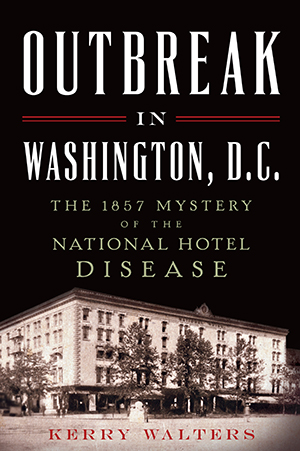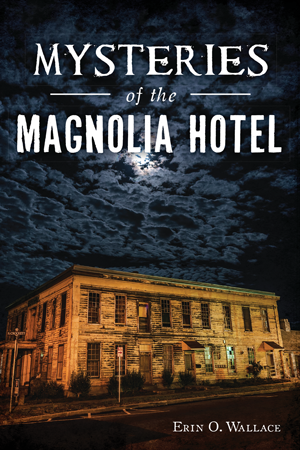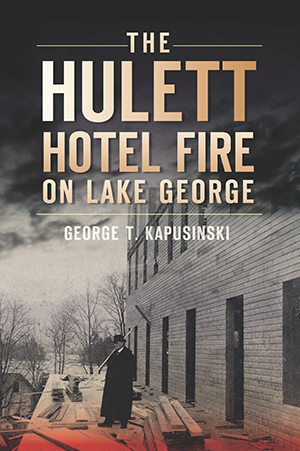
The newspapers of 1857 would have you think so! Following his election in 1856—a bitterly contested election just five years before the outbreak of the Civil War—President-Elect James Buchanan was holed up in the nation’s capital, forming a cabinet and preparing to take the reins of government.
His inauguration was set for March 4th, at the beginning of the spring thaw. (Inauguration Day would not be brought earlier until 1937, following the 20th Amendment to the Constitution.) Things seemed to be going according to plan, with Buchanan and his close advisors enjoying the comfort of the luxe National Hotel, one of Washington’s premier destinations for the upper political and diplomatic crust. Sumptuous dinners, lavish décor, and stately surroundings all served to boost the prestige of his delegation.

Until, that is, one night in January when a mysterious disease suddenly struck the hotel—and struck hard.
Medicine loves a good whodunit. Coronavirus aside, the country’s most recent medical mystery of this nature came when the American embassy in Havana, Cuba, was afflicted by bizarre, unexplained trauma, a puzzler that has taken years to unravel. A century and a half ago, however, medicine was starting on the back foot—without even the germ theory of disease in its toolkit, investigators and physicians scrambled to explain what had befallen the National Hotel.
Regular readers of Crime Capsule know we don’t shy from the grisly. But brace yourselves, because this is what historian Kerry Walters has discovered afflicted the 15th President of the United States, and dozens of others. In his book Outbreak in Washington, D.C.: The 1857 Mystery of the National Hotel Disease, Walters gives it to us straight:
“Buchanan and his unlucky companions were too sick to leave their beds. … The symptoms endured by all the men were similar: diarrhea, loss of appetite, cramping in the stomach, and bowels and bellies swollen by flatulence. The diarrhea was explosive and of a frothy of yeasty appearance. There was some nausea that worsened to the point of convulsive vomiting if the diarrhea was checked by astringents. Diarrhea and the vomiting quickly dehydrated the sick men, and they all suffered greatly from thirst. But the liquids they were given went straight through them, doing little to hydrate them.”
Related: Donald Trump’s Butler Murdered! (in 1986)
The president’s private physician, Dr. Jonathan Foltz, was on hand, and immediately began treating the afflicted, the unlucky with emetics, aka vomit-inducers, and the luckier with brandy. (You can guess which one Buchanan received.) But though some of the symptoms eased over the next few days, others lingered for weeks and in some cases months. Weakened by the disease, Buchanan struggled through his own inauguration proceedings, but survived; ultimately four people would die from complications due to this disease, including Buchanan’s own nephew.

Naturally the sleuthing began in earnest, even as the presidential transition team fought valiantly to keep the word of the illness under wraps. In this, they failed mightily, with news of a “National Hotel Disease” soon sweeping the papers of the day, and causing no small panic among Washingtonians.
Everyone feared the outbreak might spread past the confines of the afflicted hotel guests, and seep into the wider streets of the city—streets that literally ran thick with effluvia, thanks to Victorian sanitation practices that believed exposing raw sewage to outdoor elements served to neutralize its most harmful effects.
But like a criminal that’s always one step ahead of the cop, efforts to determine conclusively what caused the outbreak kept just falling short. As Walters writes, medical science of the day was almost—but not quite—ready to crack the case, and years would pass before researchers could determine what had brought the incoming president to his knees.
In the meantime, conspiracy theories popped up like weeds—was it an assassination attempt by abolitionists, to kill a candidate sympathetic to slave states? Was it a conspiracy by a secret cabal of powerful slave-owners, to install an even more radical vice-president in Buchanan’s place? Or of course—what else could it be—but the grand old lady of secrecy herself, the Roman Catholic Church?
As usual, no spoilers here, but we’ll leave you with one of Walters’ observations that leaves us as sober as if we’d taken one of those emetics: the argument about the origins of the disease, he writes, “…is a revealing barometer of just how fragile the country’s equilibrium was after a decade of intense and increasingly fraught debate about slavery. The sectional distrust and dislike generated by the debate created a toxic breeding ground for the politics of paranoia.”
Plus ça change, amis. Plus ça change.
Looking for more to read during quarantine? Check out our quaran-reads here. Finding us for the first time, and want to learn more about what we do? Visit our welcome page and sign up for the Crime Capsule email newsletter. You might also enjoy these titles below. See you behind bars!






